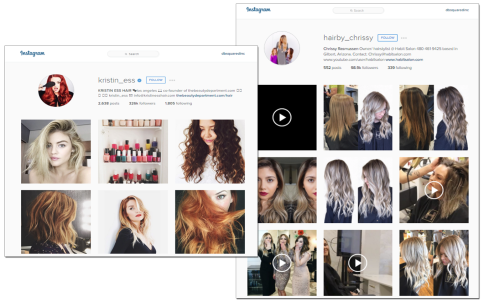Loyalty marketing might result in repeat sales but that doesn’t necessarily mean they are creating lasting brand loyalty. Find out which 4 Ps of customer loyalty might be the real reasons why a small business owners claim that our customers love us might in fact be true.
Our Customers Love Us, Our Customers Love Us Not
Your customers might love the products you sell or the results they receive because they purchase your services, but this doesn’t mean they love your business or feel personally connected to your brand.
Even loyalty rewards programs, though desired by a large number of consumers, do not necessarily indicate real brand loyalty. A study done by Vanessa DiMauro and Don Bulmer with The Society For New Communications Research to find out how consumers form impressions about brands found that while quality and pricing of products and services laid the foundation for loyalty, the next three factors rounding out the top five were a brand’s customer care program, what friends or loved ones said about the brand and real customer reviews and ratings on social media. A brand’s actual reward program was very influential to only 18 percent of study respondents.
In fact, it’s possible for customers to have negative feelings about your brand or business even if they regularly purchase services and products from your organization. For instance, you could have a local monopoly, they could be locked in to a contract, or your business might be extending pricing that is compelling enough for them to put up with what they don’t like about your business – just long enough to get what they want from you.
That’s a sobering thought; or it should be. It’s possible that many business owners confuse repeat sales for customer affection, misinterpreting customer behavior that – if they looked beyond the surface – would reveal dissatisfaction and problems that could be addressed in order to make the brand one that customers would love just as much as they love the products or services they purchase from them.
Our Customers Love Us (But How Can We Tell for Sure?)
Most professionals are familiar with the concept of “buying signals” which are actions that prospects commonly take when they are entering the buying cycle, moving from stage to stage within the cycle or when they are ready to seal the deal. Just as there are signs that indicate someone is ready to buy, there are signs that indicate a customer feels loyal to a brand, beyond the products or services it sells:
- Their patronage continues despite changes in pricing or product mix
- They frequently open and read your brand emails
- They follow and even interact with your brand on social channels
- They refer colleagues, friends or loved ones to your business
- They leave reviews about your business online
- They complete customer satisfaction surveys at the point of sale
- They ask questions and offer meaningful suggestions
Any one of these actions could be a sign of genuine customer love for your brand on their own; but it’s not uncommon to find that engaged customers will send a few or several of these signals. The question is, if products and services aren’t enough to garner customer affection for a brand on their own, what is? The “Four Ps of Marketing” are product, price, place and promotions so we came up with four more words that start with the letter P which lay the foundation for the type of loyalty that transcends the four Ps of marketing, turning customers into loyal brand patrons whose love for a brand can stand the tests of time.
Loyalty Marketing: 4 Ps Explain Why Our Customers Love Us
1. Passion
When a business’s employees are passionate about the work they do and the customers they serve, it shows up in a customer experience that cannot be replicated by competitors.
2. Personalities
The same business owners that say “our customers love us” often claim that their employees – not their products or services – set them apart. For better or worse, a brand’s ambassadors do set the business apart, and business owners that understand this appreciate the importance of each and every hiring decision they make.
3. Purpose
When doing business with you makes people feel that they are part of something special, and part of something that makes the world better in some way, it can move them to the next stage in the customer lifecycle, taking them from casual customer to loyal supporter.
4. Pleasures
Every customer touch point represents an opportunity for a brand to differentiate itself in a meaningful way from competitors. The better a customer feels about doing business with your brand, the more likely they are to identify with your brand personally beyond the products or services they purchase.
You might also like: Which Loyalty Perks Do Customers Really Want





